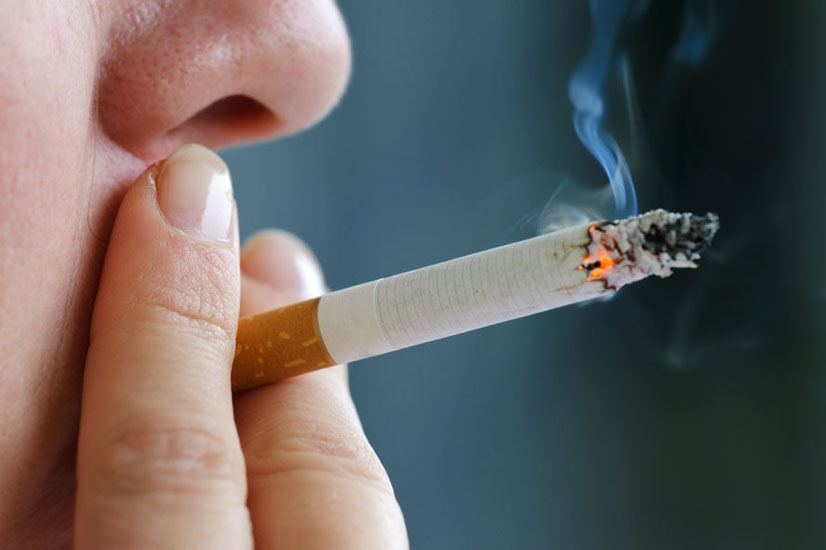Who is still smoking?
Great American Smokeout draws attention to "hidden epidemic"

Although smoking rates have dropped dramatically in the U.S. - from 42% in 1965 to 14% in 2017 - some groups continue to have high prevalence of cigarette smoking. That’s according to the American Cancer Society (ACS), which is using the upcoming Great American Smokeout as an opportunity to highlight this “hidden epidemic.”
The Smokeout, a public awareness event that encourages people to quit smoking, will take place on November 21, 2019.
Smoking accounts for nearly one in three cancer deaths in the United States. It increases the risk of cancers of the lung, mouth, larynx, throat, esophagus, kidney, cervix, liver, bladder, pancreas, stomach, and colon/rectum, as well as for myeloid leukemia. Smoking damages nearly every organ in the body, including the lungs, heart, blood vessels, reproductive organs, skin, eyes, and bones.
Who is still smoking?
The ACS says smoking rates remain high among individuals in lower education and/or socioeconomic groups; from certain racial/ethnic groups; living with substance abuse; with mental illness and substance use conditions; and in the military.
Education: Fifty years ago, the difference in smoking rates between the most and least-educated was small: nearly 40% of college‐educated individuals smoked compared to 45% of individuals in all other education groups. Five decades later, 6.5% of college‐educated individuals smoke, while the rate is more than three times higher among those with a high school education or less (23.1%).
Poverty: Although all income groups experienced declines in smoking over the last few decades, the largest relative decreases have been with higher socioeconomic groups. In 2015 and 2016, current tobacco use was about 10% for adults in higher income households (greater than 400% of the Federal Poverty Level) compared to almost 25% of adults in households below the poverty line .
Race/Ethnicity: Among all racial and ethnic groups, there has mostly been a downward trend for both men and women, but there also remains considerable variation. Individuals who are of American Indian or Alaskan Native descent exhibit the highest smoking prevalence (24.3% men and 23.4% women), and women in this group also experienced a recent upward trend (after a nearly two‐decade decline). Individuals of Asian and Hispanic/Latino descent demonstrate the lowest prevalence (12.6% men and 3.5% women). The reasons for these differences are not well understood, although some research suggests that social and cultural differences and/or practices may explain some of the variation.
Mental Illness: The burden from smoking is particularly high in individuals living with mental illness. Evidence suggests that some individuals with mental illness may have a genetic predisposition toward addiction and/or may self‐medicate using nicotine. Past 30‐day cigarette smoking use among people with a past‐year serious mental illness was more than double those without a past‐year mental illness (27.9% versus 12.9%).
Substance abuse: The burden from smoking is similarly high on individuals with substance use disorders. About three-quarters of people (74%) ages 12 and older receiving substance abuse treatment reported smoking in the past year.
Sexual Orientation: Smoking prevalence rates among lesbian, gay, bisexual, and transgender (LGBT) men and women in the United States are much higher than those among heterosexuals (20.3% vs 13.7%). The social stresses of living in a society that can be hostile to individuals in the LGBT community contribute to the higher prevalence. In addition, the tobacco industry has marketed specifically to the LGBT community for many years, placing advertisements in community media outlets, attending pride festivals to hand out coupons for discounted cigarettes, and promoting their products in LGBT bars to gain customers and leverage aligned groups in the industry's fight against smoking bans.
Military: As in the U.S. population overall, smoking in the military has trended significantly downward in recent decades. In 1980, more than half of military personnel reported smoking. By 2011, smoking rates had dropped to less than one‐quarter. For enlisted service members in the lowest four pay grades, 30% were smoking in 2011. In contrast, tobacco use in the highest six pay grades of commissioned officers had dropped below 5%.
“Eliminating disparities in tobacco use through approaches specifically geared toward these populations is vital to continue to drive smoking rates down and to reduce health disparities”,” said Richard C. Wender, M.D., American Cancer Society chief cancer control officer. “Increased attention to and support for novel interventions, such as targeted cessation and tobacco control efforts to counter the tobacco industry's marketing efforts, are crucial going forward to reduce tobacco’s continued high impact on death and disease.”
For more information, visit www.cancer.org/Smokeout
Citation: Who’s Still Smoking? Disparities in Adult Cigarette Smoking Prevalence in the United States; CA: A Cancer Journal for Clinicians doi: 10.3322/caac.21444.
Looking for a reprint of this article?
From high-res PDFs to custom plaques, order your copy today!





